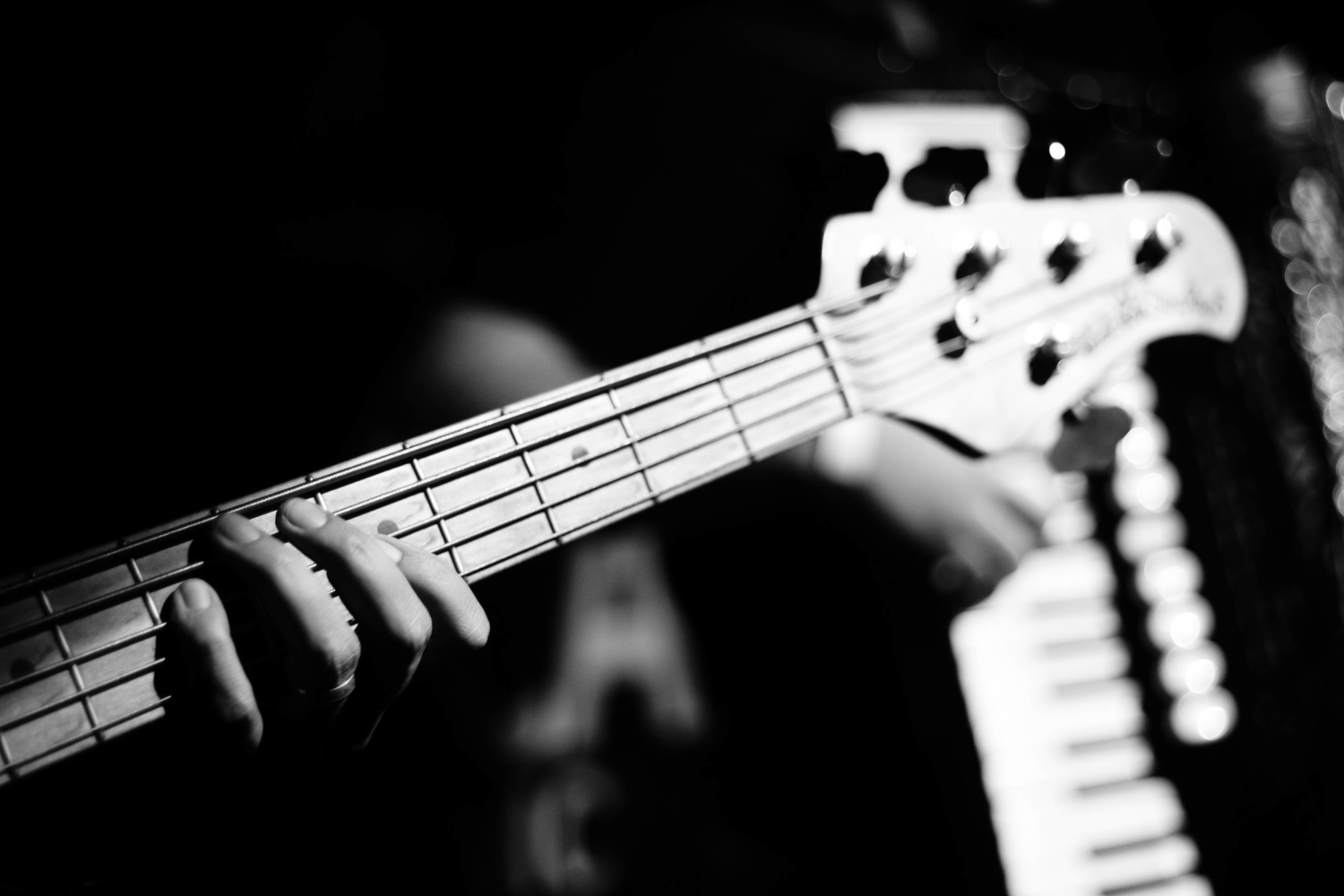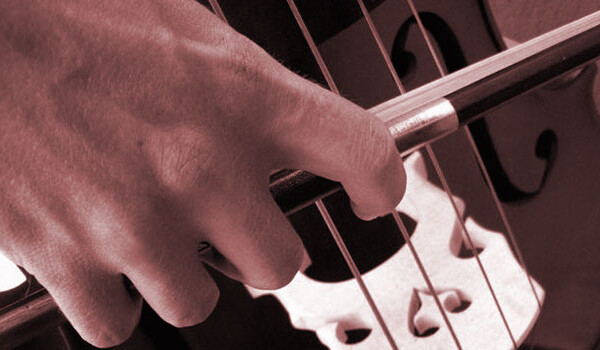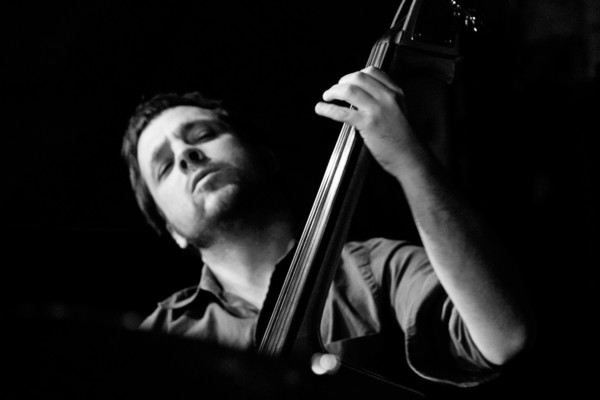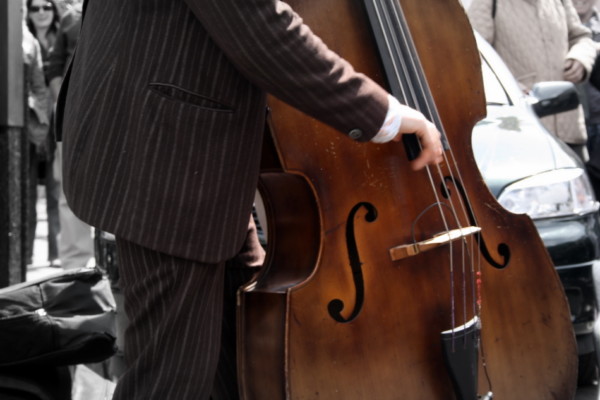Moving from Upright to Electric Bass

If you are an electric bassist looking to learn upright, getting your double bass skills up to snuff can be daunting. When deciding to become a “switcher,” most of us coming from the electric bass side of things approach the new, bigger instrument with some amount of trepidation. The usual feeling seems to be that while it’s by no means an impossible task, it’s definitely not a plug-and-play situation. We seem to accept that it will take some effort, and some time. For most of us, this healthy dose of respect helps ensure a fairly smooth transition. It helps prime our mind to be ready to learn the new systems and techniques needed to master our instruments larger cousin. Doing otherwise simply slows our learning down and puts a “cap” on our upright skill level.
In my experience, most of us “doublers” (certainly not all!) start life out as an electric bassist and then learn the double bass later. That was certainly my trajectory. As a result, there is a lot written about this subject, i.e. an electric bassist who is just beginning to learn the double bass. There seems less, however, about double bassists who want to add some electric bass to their toolkit.
Unfortunately, when it comes to switching from upright to electric, there seems to be a general sense that the adjustment is so easy it won’t require any study. Unless you are looking to do some two-handed tapping or some furious slap, you can just pick it up and go! At least, it appears that many think this way, which is unfortunate and incorrect. The electric bass is a musical instrument with a unique world of sound and possibilities, and not so easily mastered.
While many things about the electric bass may seem easy to a trained double bassist, (i.e. frets help with intonation, no bow to worry about, strings are shorter, etc.) there are still things that need to be studied and learned. So many times a double bassist picks up an electric bass, and something just doesn’t sound right.
So, below are a few suggested “target areas” for a double bassist who is just beginning to explore on the electric bass.
1-2-3-4 Fingering
Your traditional 1-2-4 fingering can get you by the basics, but fairly quickly you are going to want to have access to a one-finger-per-fret (or larger) system.
Pizzicato
The usual pizzicato (plucking) techniques on electric are tremendously different than on the double bass. If you are primarily an arco player, you will certainly need to pay attention here. You’ve likely not ever thought about how you might use multiple right-hand fingers, or the thumb, etc. to make a passage work well. Would second finger or first finger on the right hand be better? What about the third finger? You may not know what “raking” is, or be able to alternate right hand fingers consistently without hiccups. You will need to know, and be able to do, these things to be successful on electric.
Obviously, the speed, force, and part of the finger you pluck the string with is significantly different on the two instruments, as are the hand position, finger movement, and more. As a result, you should definitely put in the time, and practice, learning electric bass right-hand techniques. They have a significant effect on rhythm, tone, and ease of play.
Rhythm
This applies mostly to classical-only players, but the sense of rhythmic momentum and “groove” can take some time to solidify in your playing. Don’t make the mistake of thinking that playing technically simple lines means that doing it well is easy.
I once heard a classical player say when speaking about a jazz bassist we were listening to, “that’s easy, it’s just quarter notes… and it’s an electric. Anyone can do that.” That person may have thought they were telling me how much more of a bassist, or musician, they were than the jazz player. All this person did, however, was communicate to me that he didn’t understand what that bass player was really doing. Don’t be that person. Learn about groove, rhythm and pulse and how we fit into the ensemble as bass players.
Tone
This is where there will be a lot of new information for someone who has only played the double bass acoustically. Certainly, how we physically play the electric bass will have a great effect upon the sound, and we should pay attention to that. However, unlike when playing double bass, this is not enough, in and of itself.
There is an entire universe of knobs, buttons, sliders, EQ’s, speaker sizes, chains, impedance, watts, etc., that one may never have experienced before. Do some reading, do some experimenting, and pay attention to your tone. Just as when you were learning your double bass, listen to the masters. Be able to distinguish their tone, even replicate it to a certain extent. Learn about your equipment so you can create a tone that has some thought behind it. Don’t be one of those unfortunate double bassists who picks up an electric bass but doesn’t pay attention to your tone. You don’t want to sound like you are playing through a trash can.
There is certainly more than is listed above to consider when moving from double bass to electric bass. However, these are some basic areas that upright-to-electric switchers may tend to overlook or undervalue, in my opinion. Approach the move with some respect, just as your electric-to-upright colleagues do, and you will be just fine.
Dr. Donovan Stokes is on the faculty of Shenandoah University-Conservatory. Visit him online at www.donovanstokes.com and check out the Bass Coalition at www.basscoalition.com.



